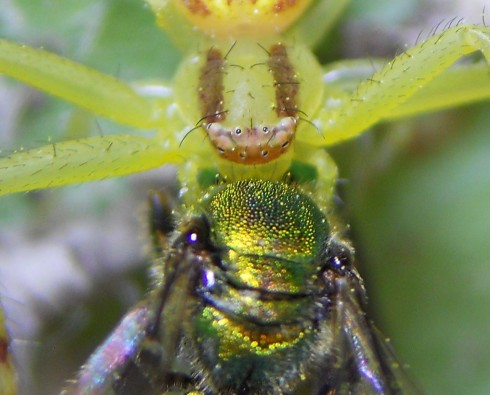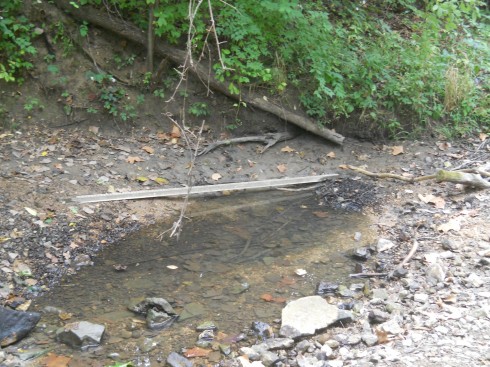
It has been remarkable to see the drying of the creek over the relatively dry summer.
Spring.
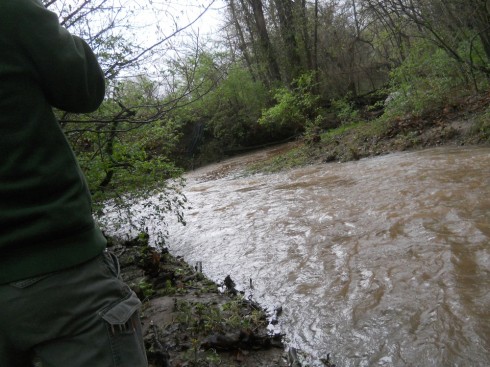
Mid-Summer
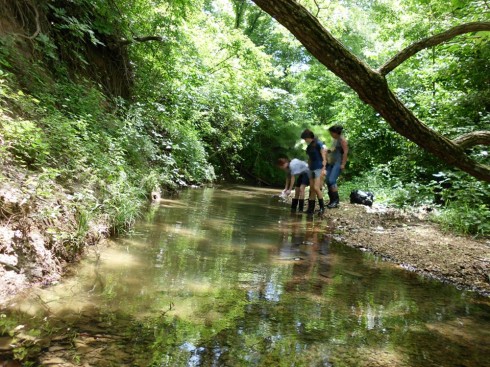
End of the summer.
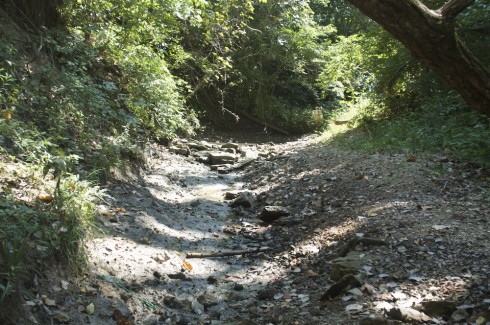
Middle and High School … from a Montessori Point of View

It has been remarkable to see the drying of the creek over the relatively dry summer.
Spring.

Mid-Summer

End of the summer.

I had one of my middle school student groups try a conservation of momentum experiment that, while they made it out very well in the end, did not do a good job of conserving momentum.
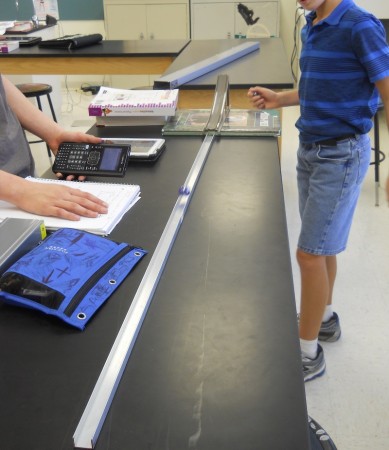
The students rolled a marble down a ramp by itself and measured its velocity across a horizontal track. The velocity measurement let them calculate the marble’s momentum across the track since they’d measured the mass of the marble before rolling it down the ramp:
momentum = mass x velocity
Note that since mass was measured in grams (g) and velocity in centimeters per second (cm/s), their units of momentum were gram-centimeters per second (g cm/s).
That was the easy part.
Next they put a second marble at the bottom of the ramp as a target, so the first marble would hit it and redistribute the momentum.
Because it was a collision between two marbles, there was no easy way to make the collision sticky, so they ended up with two marbles moving off at different speeds. Measuring the speeds of the two marbles at the same time was tricky, but they got it done.
Finally, they could calculate the momentum of the two marbles at the end, and the combined momentum should have been equal to the momentum of the one marble from before if momentum had been conserved.
When they did the math, the marbles after collision had about 80% of the momentum of the single marble. This difference allowed them to explain, in their presentation, that momentum was not completely conserved — and in real life it almost never is — because some energy was lost in the collision. Fortunately, we’d already had the presentation on friction so the context of energy losses, and resistive forces could be incorporated into the discussion.
I suspect that some significant portion of the difference in momentum measured was due to the fact that they were using stopwatches to measure the time the marbles took to move between two markers on the track. I’d love to have a motion detector or photogates for this experiment.
My students (almost) created an unmanned robotic drone for delivering messages to the main office.

The robotics students have put together their first robots and are trying out the software for making them move. Lego has a new app that allows you to use your iPhone or iPad as a remote control, and my kids love it. They’ve got a robot fighting competition going on using them as remotes. I, however, wanting to push them into actually programming the robots for autonomous motion, told them I wanted them to get the robot to deliver a message to the front office without them following it through the building.
Well, this was their solution:
They attached an iPhone to one of their robot with the camera facing out. They then connected made a video call to that phone using another phone and the FaceTime app. Since the two phones were busy communicating with each other, the robot was operated using the wireless, Bluetooth connection via someone else’s iPad.
It worked. More or less. The robot lost the Bluetooth connection at the end of the hall, so the robot could not make it all the way to the office.
So now they’re actually trying to write a program. Although I finally got them to do what I wanted, I have to say I was impressed with their innovative use of technology.
Scientific American has an article on “The Scientific Secret of Fluffy Pancakes” that nicely covers the chemistry of gluten. The article includes a recipe, but I tend to prefer buttermilk pancakes (Cook’s Illustrated has a great buttermilk pancake recipe that I find tastes even better if you leave out the sugar).
My wife has been experimenting with gluten-free pancakes and I’ve discovered that I like hers even better because of all the ground nuts it includes. However, in the gluten-free recipes, crucially, Xanthan gum is used to replace the gluten in capturing the carbon dioxide bubbles created by the baking powder reacting with the acid in the recipe. While the gluten is sensitive to how much the batter is mixed (stretching out the proteins), the quantity of Xanthan gum is more important in the gluten-free recipes.
↬ Maggie Eisenberger.
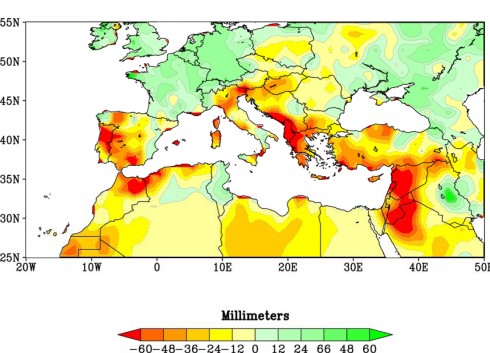
A 2011 article from the National Oceanic and Atmospheric Administration linked recent severe droughts in the Mediterranean to anthropogenic climate change. Now Francesco Femia and Caitlin Werrell assert that the drought (and agricultural mismanagement) lead to the displacement of a million and a half people in Syria, which helped spark the current civil war.
Additional links:

A parent (thanks Dr. E) found this old projecting microscope at a microscope store in town. The optics are arranged upside-down relative to normal: the light is at the top and the objective lenses are upside-down and below the slide. The light coming through the objective is reflected onto the screen using a simple mirror.
It needs a dark room to see some of the more detailed, lightly stained. However, higher-contrast slides show up reasonable well in our classroom, despite its large, unblocked windows.

I’m taking a small group of kids hiking/cross-country running for Physical Education this quarter. With the heat wave of last week, and having to clear the trail up the hillslope, today was the first day we actually got all the way to the top of the ridge. On our way back down, one of my students had stopped to look at a frond of tiny, pretty flowers when she spotted this beautiful, yellow spider with its brilliantly, iridescent catch. We brought them back to the lab to look at it under the microscope. It’ll also be interesting to observe what the spider does with the fly.
